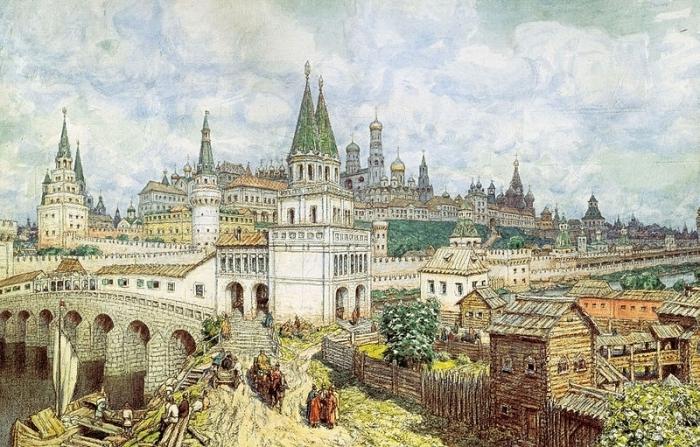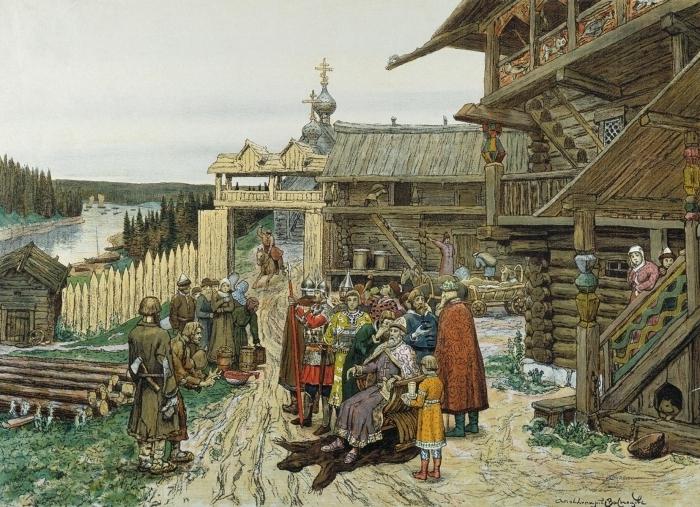Feudal fragmentation was a characteristic stage for all medieval European states. Russia was no exception. Already in the XI century, the first tendencies to independent substantiation of individual principalities began to appear here. And in the first half of the XII century, once one of the powerful states of the region disintegrates into completely independent principalities. From these local entities, the Novgorod Republic, the Galitsko-Volynsky, Chernihiv, Vladimir-Suzdal, Moscow and a number of other principalities subsequently grew. It was Moscow that was yet to become the new cultural, economic and, finally, political center of the Eastern Slavs.

The struggle for the unification of the Russian lands again under the rule of a single ruler begins already from the beginning of the XIV century. In this period, the fragmentation of the principalities reaches its peak and the reverse process of centralization begins. By the way, this process was also characteristic of the whole of Europe: somewhere it happened early (as in England), and somewhere the consequences of medieval feudal fragmentation were overcome almost until the 20th century (Germany, Italy). Thus, the prerequisites for the unification of Russian lands were of a similar nature to pan-European trends. At the same time, they also had a number of features.
Prerequisites for the unification of Russian lands

Just as the feudal fragmentation was facilitated by weak trade relations between the regions of the country, the same economic reasons formed the basis for the unification of lands in the XIV-XV centuries. In particular, this was reflected in the progress of agriculture and the strengthening of trade ties. In addition, the development of agriculture led to a more intensive allocation and the formation of a separate class of artisans. Domestic markets are being created, economic ties are being strengthened. Thus, the primary prerequisites for the unification of Russian lands lay in the natural socio-economic development of the East Slavic territories, which automatically entailed the need for political unification. The formation of a single state has become a priority interest for wide circles of Russian society: merchants, artisans, the urban population and, of course, the nobility. Other prerequisites for the unification of Russian lands lay in the aggravation of social contradictions. The fact is that the rise of agriculture constantly encouraged local feudal lords to intensify the exploitation of peasant communities. The most important manifestation of the intensification of this exploitation was the increasing enslavement. Of course, on the part of the peasants this caused resistance and constant riots. The principalities that were weak politically and militarily needed a state bureaucratic apparatus that would give landowners guarantees of income, and for the peasants would create uniform rules and protect them from the arbitrariness of the landlords.
Stages of unification of Russian lands
As you know, Moscow became the new center of the Eastern Slavs . This centralization is usually divided into four stages:
- 1st stage . It began at the beginning of the XIV century and was characterized by the displacement of the economic center from the southern territories to the northeast.
- 2nd stage . The second half of the XIV and the beginning of the XV century. During this period, the Moscow princes managed to overcome all their rivals and crush the rest of the Russian lands. Then the first high-profile victories over the Tatar armies happen - the Battle of Kulikovo.
- 3rd stage . There is a war for power in Moscow itself.
- 4th stage . The second half of the XV and the beginning of the XVI century. Princes of Moscow: Ivan III and later Vasily III - complete the process of collecting Russian lands into a single state. In 1480, the Mongol-Tatar yoke was finally overthrown.